
KennethT
-
Posts
6,160 -
Joined
-
Last visited
Content Type
Profiles
Forums
Store
Help Articles
Posts posted by KennethT
-
-
How is the Elbow Beach hotel? For a while, they were advertising quite a bit on the business news radio station I listen to...
-
I haven't tried it personally, but have used dry ice quite a bit. I think if you use just a small amount of pieces about 10-15mm in diameter, it will keep the nuts cool, but not too cold. While dry ice itself is very cold, it doesn't have the best heat transfer properties, especially as it would be constantly tumbling with the nuts so not in direct contact with any one area for very long.
-
Last night, we had the last portion of the Singapore style curry with roti prata, recipe here:
I think I've gotten much better at cooking the prata - while it looked the same as in previous posts, it was flakier.
-
 7
7
-
-
Most meatballs I have seen in SE Asian curries have either been fish ball, or pork, and both are the bouncy kind, not the typical western meatball texture.
-
 1
1
-
-
@Okanagancook Looks great! Where do you get the salam leaves?
-
I went to Hai Di Lao in Beijing and wrote about it in my Beijing foodblog... we enjoyed it very much, and was told that it is a popular after-work spot with many of the young people who worked at our hotel.
I had read that they are planning on a location in NYC soon...
-
42 minutes ago, Eric Srikandan said:
Khao Soi is one of the finest things I have ever eaten. It does not, however, use red or yellow curry paste (the paste is yellow however).
Kenji has a recipe for the paste on Serious Eats, and there is a branded Khao Soi seasoning made by Lobo but that's a dry powder mix.
My teacher in Chiang Mai begs to differ with Kenji.. it does use a yellow curry paste, as well as a curry powder called "Hung Lay" powder. I've made it using her recipe using a red curry paste (I didn't have yellow at the time) and it tasted very similar to what I had in Chiang Mai.
-
Last night, I made Ayam Buah Keluak from the book Nyonya Specialties (probably pictured several times in the dinner thread)... but without the Buah Keluak as I haven't seen them around in the US - not that I've actually looked that hard. I first had this dish (among others) in a local Peranakan restaurant in Singapore and loved it - it was my favorite of the night, so I was happy to see that it was a featured recipe of this book, that I got from my local library. Now, it's in a regular rotation of fast week night dishes since the most time consuming component is the spice paste, which can be made in bulk in advance and frozen. Every few months, I'll make a batch which winds up making 9-10 meals worth of paste. In the paste is garlic, shallots, galangal, turmeric, chilis, shrimp paste, candlenuts and curry leaves (I'm probably forgetting some). The paste is fried in oil and then I portion into 100g portions and freeze. Making the final meal is fast - I dump the frozen lump of paste in about a cup of water, cover and simmer until the paste defrosts. While that's going, I make a thick tamarind puree using 25g tamarind and 50g water... add that to the simmering curry along with a bit of salt and MSG, throw in 4 chicken thighs seasoned with a little salt, sugar and MSG, and simmer uncovered for about 12 minutes, turning once in the middle. It is a very savory curry, and the smell of shrimp paste perfums our apartment (and hallway) for a few days afterward!
-
 5
5
-
-
Great amuse bouche... can't wait for the meal to begin!
-
 3
3
-
-
-
For me, I find it much easier to buy premade masala rather than grinding my own. Luckily for me, there is a store called Kalustyan's which is very close by that has tons of different varieties of masala, and all are ground fresh. I think they ship as well... https://foodsofnations.com
-
 5
5
-
-
-
I've heard that Maesri is less salty than the Mae Ploy. I've had the Mae Ploy in the plastic pouch in the tub and have not been impressed. The best curry paste I've had outside of Thailand is Nittiya - but it must be kept refrigerated. Whenever I go to the Thai store in Chinatown, they're always sold out... very frustrating. But I've heard decent things about Maesri in the can - I have a can in my pantry (of the red curry) but haven't used it yet.
Many years ago, I was in Chiang Mai and we took a cooking class - one of the dishes I requested making was Khao Soi, which originates in the area. I can't find the recipe now, but it used a yellow curry paste, although you could sub in red curry paste in a pinch. I don't know what to do with the sour yellow curry paste though.
-
 1
1
-
-
@Shelby I think it depends on what kinds of curry you want to make, so the advice to look at a few recipes and get ingredients for that is a good one. Curries from the various countries/regions will vary significantly. For instance, many SE Asian curries (from Thailand, Malaysia, Indonesia, etc) use more fresh products like garlic, ginger, galangal, kaffir lime leaf, fresh chiles (several different kinds) etc. than dried spices like in many Indian curries.
One thing that I would add to the list is belacan - shrimp paste. It's essential in many Malay/Indo/Nyonya dishes... also dried shrimp (the kind that needs refrigeration). And fresh curry leaves and kaffir lime leaves, which don't stay fresh long, but can be frozen.
Also, when it comes to dried chilis, there are so many varieties - one store near me must carry at least 20 different kinds of dried chilis. I tend to use Puya chilies as they are available here and are a decent substitute for the not-so-spicy dried chilis used in SE asia. But also dried thai chilis as well to add a different flavor, and more heat.
-
 4
4
-
-
I imagine a cutting would root well. I've thought of trying it but the branches I can get don't look fresh enough. One day when I get some time I'll try it anyway.
-
 1
1
-
-
@sartoric That black tamarind sounds amazing... I have to look for it around here.
I also love curry leaves and use them in quite a few of the curries we make. I keep saying that I should grow a curry plant - I gather they grow easily in hydroponics which is a plus for me... plus, the only store around me that has them sells them for like US$5 for a small branch! It's highway robbery, but I pay it because I don't have much other choice other than going really far away, or growing it myself.
-
 2
2
-
-
3 hours ago, Okanagancook said:
I made tamarind water for my upcoming curry cook. Tamarind seasoning is used in many curries especially South Indian, Indonesia, etc.
Tamarind: https://en.wikipedia.org/wiki/Tamarind
I had the pulp that can be purchased in blocks.
Charmaine Solomon's books says to soak a walnut sized piece of pulp in 125 ml or 1/2 c of warm water for ten minutes or so; squeeze the pulp with your fingers; and strain through cloth. Here is the process. I dated the bottle and it is in the fridge.
While talking about ingredients there is a picture of my spice boxes. These little things are very handy when making curries. They seal quite well keeping the spices fresh. I do have a stash of more of each spice sealed in vac bags for freshness. https://www.amazon.ca/Philco-Masala-Dabba-Spice-Box/dp/B00G7S201G/ref=sr_1_16?ie=UTF8&qid=1537642590&sr=8-16&keywords=spice+boxes
I prep my tamarind a little differently. I put the necessary amount of tamarind paste in a small saucepan with lid, and add double the amount of water in ml to the tamarind by weight. So, typically for a 2 person curry, I use about 25 g tamarind paste and add 50ml water. I bring it to a boil, then cover and let steep and hydrate for about 5 min. Once done, in the same pan, I'll mash the paste with a fork until it's all completely hydrated, then just dump into a strainer. Using a spoon, I'll press the thinned paste through the strainer until I'm just left with the skins. Then scrape off the tamarind paste that has collected on the bottom of the strainer and mix with the watery liquid that went through the strainer. It results in a thicker tamarind liquid, which I like since it doesn't add too much extra water to the curry. I can always add more plain water if needed.
-
 4
4
-
-
@sartoric Did you make all of those? If so, wow! That's a lot of work! Must have taken all day!
-
 2
2
-
-
I like to use fingerlings in a ricer, then I dry in a pan on the stovetop and then beat in only butter... no milk or cream for me. After the butter is incorporated, this mixture goes through the tamis, and then finally thinned with a bit of the starchy potato boiling water.
-
 2
2
-
-
My wife and I love curries... especially the SE Asian ones. I usually make a large batch and portion and freeze. Lately, I've been on a Nyonya curry kick - Nyonya (aka Peranakan) is a group of people that descend from Chinese immigrants to Malaysia, Indonesia and Singapore. Some use coconut milk, some do not. I've made a few from Nyonya Specialties, and discussed it a bit here:
After using this book for a while, I've learned a bit of how to create my own to recreate some of my favorite dishes I've had during my travels.
-
 5
5
-
-
I wound up using AP flour, and it turned out great. Unfortunately I didn't take photos - but the skin stayed pretty crispy, even though it was slathered in a mostly dry sambal - the sambal had been fried previously, and then refried to warm up just prior to slathering...
-
 3
3
-
-
3 hours ago, Shelby said:
Compressed watermelon where have you been all my life?
Try compressing it with a bit of gin in the bag!
-
 1
1
-
 2
2
-
 1
1
-
-
I've been looking to recreate the sambal fish that I had at (old) Lai Huat in Singapore... They take a whole fish, fry it, then coat it in their sambal which seems to consist of chiles, dried shrimp, shrimp paste, tons of garlic and shallots. I made the sambal last night, but it got finished too late to start dinner.\
I have 2 filets of red perch. I was thinking of giving them a flour coating, then pan frying - the question is which flour? Should I use AP flour or rice flour?
-
My wife and I finally made it to this place in the East Village. It's a chinese seafood place that also does skewers. We thought it was a good sign that most people around us waiting for tables were speaking Mandarin. The space is a bit cramped (especially if you order a lot of food) but we really enjoyed it and will certainly return.
They provide aprons to wear and packets of plastic gloves...
Boiled crawfish and shrimp in a hot and spicy sauce. Comes with potatoes, lotus root and we added a fried bread which was awesome. The boil was slightly tingly from some szechuan peppercorns and a little sweet and sour too. We also got the same thing with a garlic boil that was crazy garlicky. It was my favorite.
They had skewers similar to chuan'r we had in Beijing. One lamb is pictured but we got two of those and 2 chicken. Both very tasty.
Prices were very good and they give a 10% cash discount!
-
 6
6
-
 1
1
-

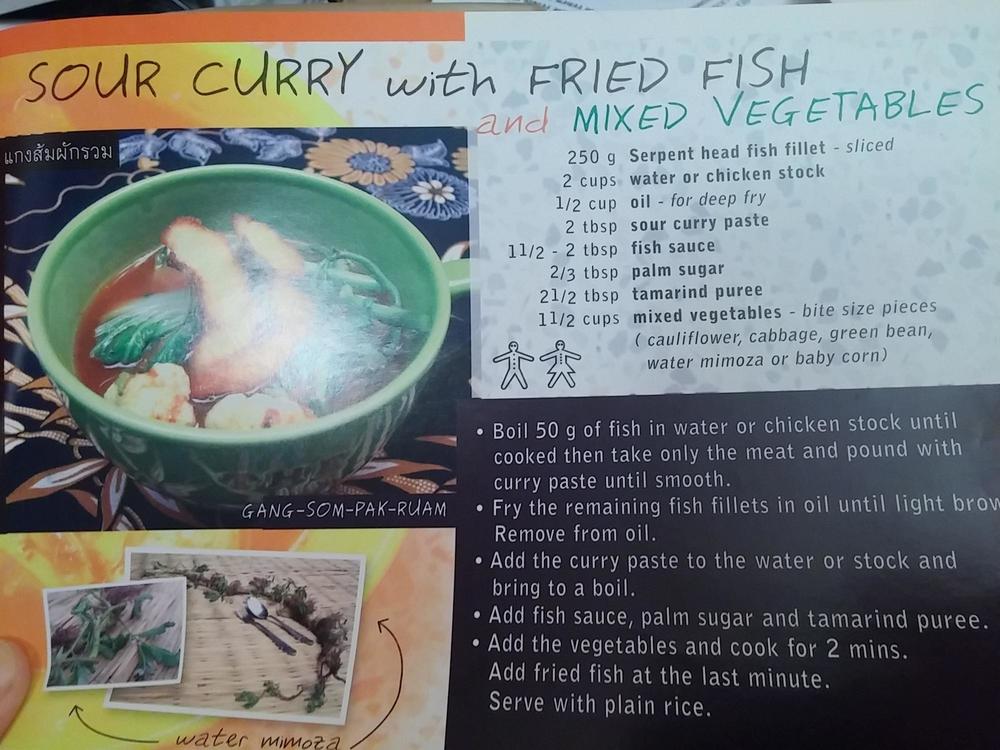
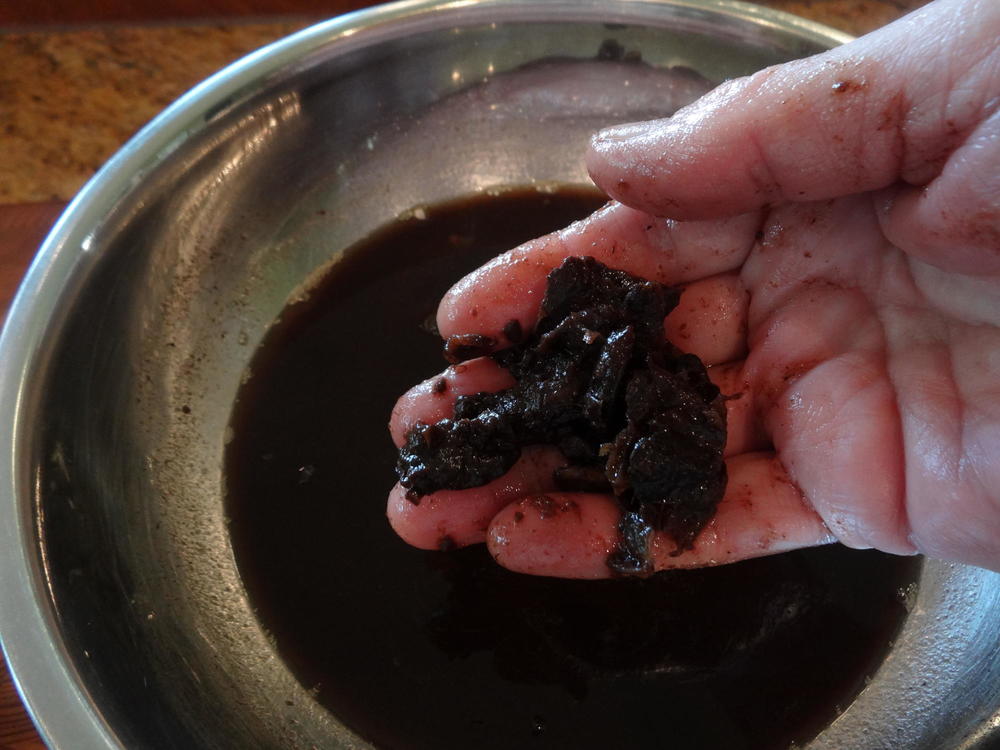

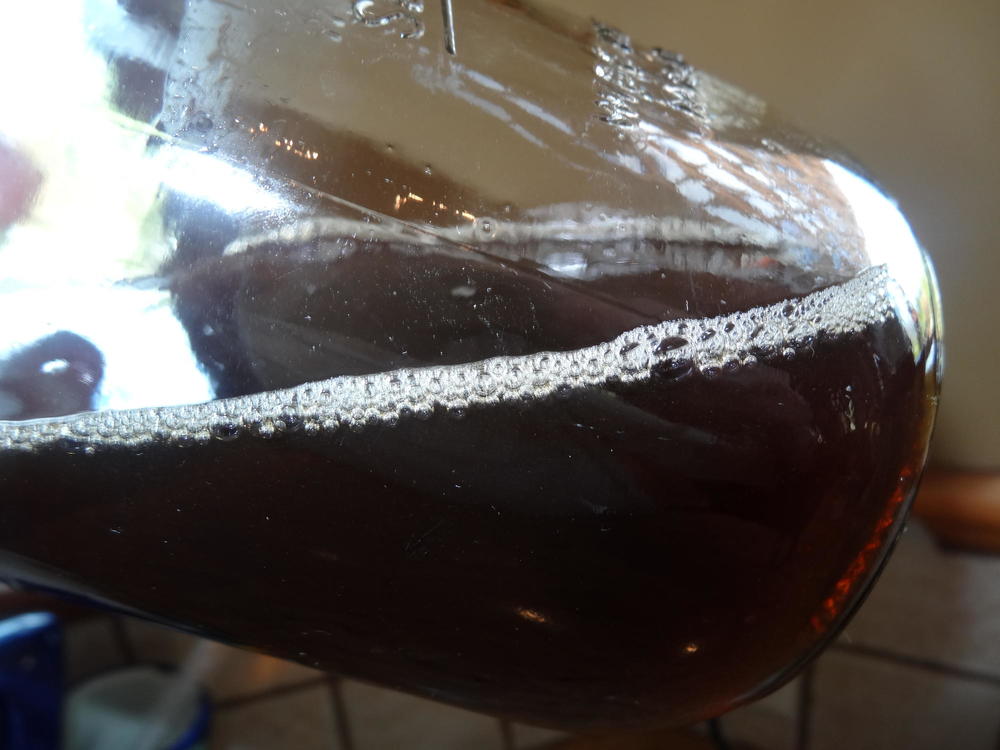
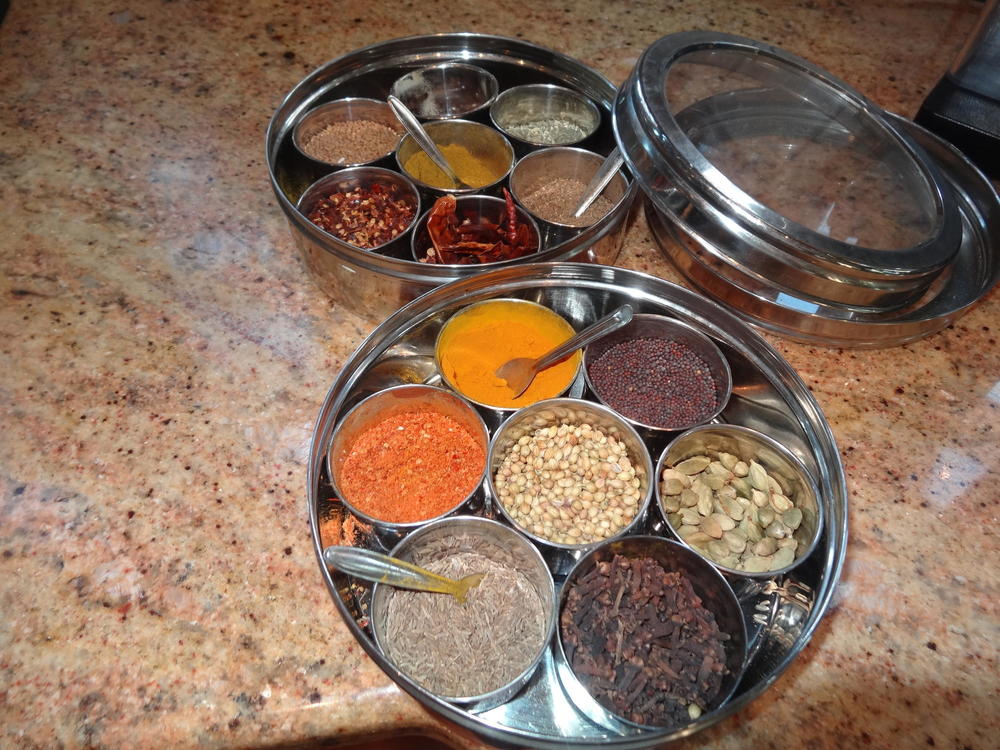
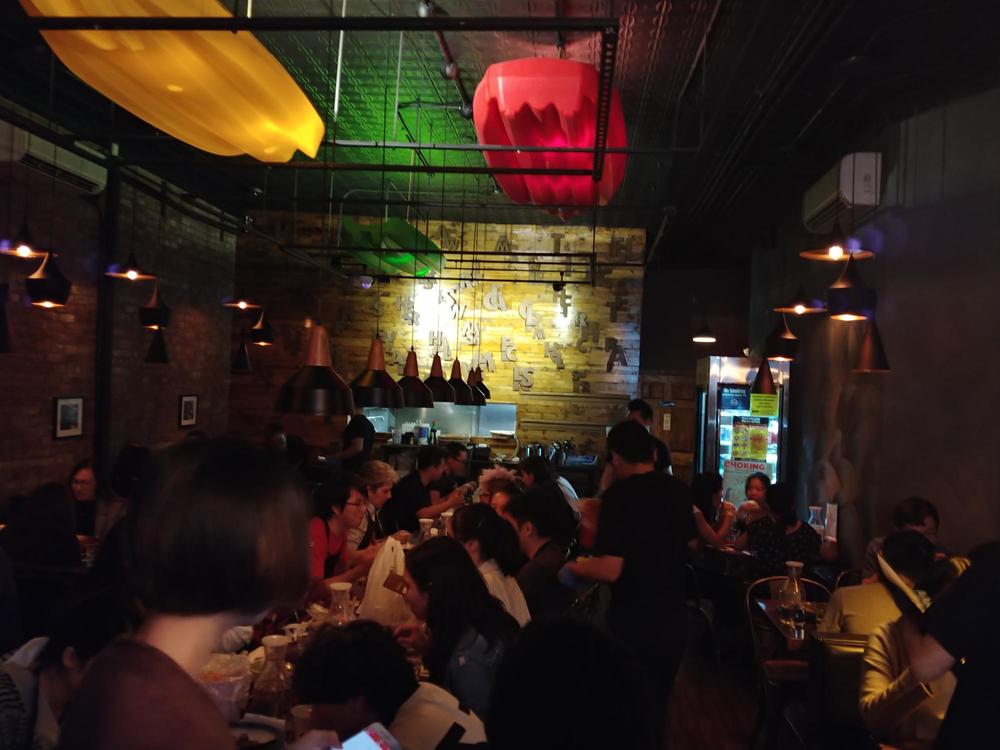

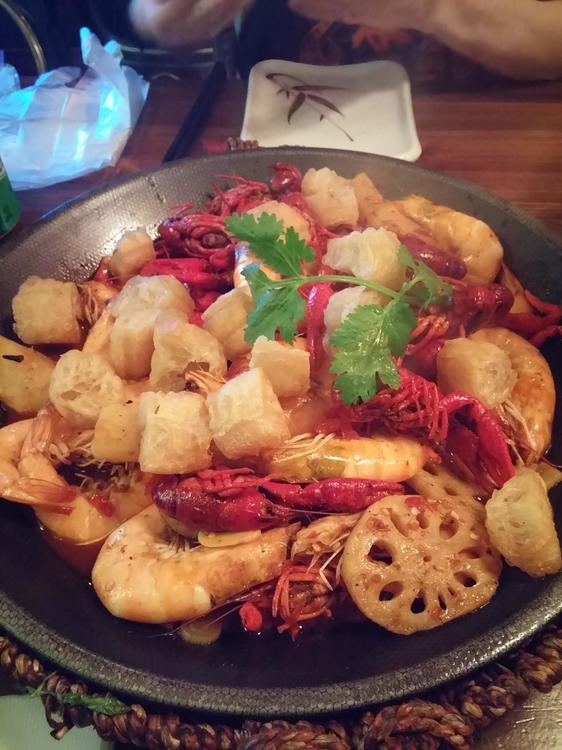
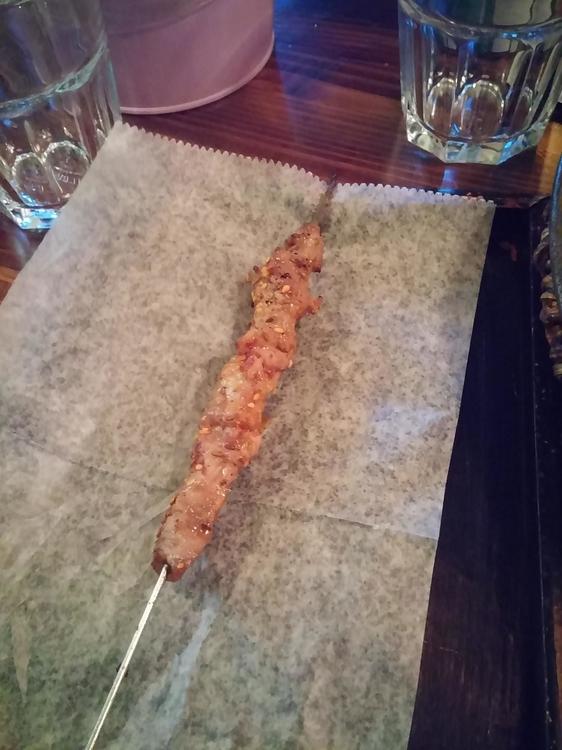
eG Cook-Off #80: The Aromatic, Exotic Flavors of Curry
in Cooking
Posted · Edited by KennethT (log)
OK, I know this is a "cook-off", but we ordered Thai food from one of my favorite Thai restaurants in NY - their green curry is the closest I've tasted to what I've had in Thailand... in addition to their green curry paste, there are kaffir lime leaves, thai apple eggplants (my favorite
eggplantaubergine), and something I've never seen anywhere else outside of Thailand, slivers of krachai, aka lesser ginger. Not pictured, and technically not a curry, we got some nam prik ong - which is a relish made with pork, shrimp paste and tomato served with crudite and pork rinds for dipping, and one of my favorite vegetables, pak boong aka morning glory aka kangkung aka ong choy.